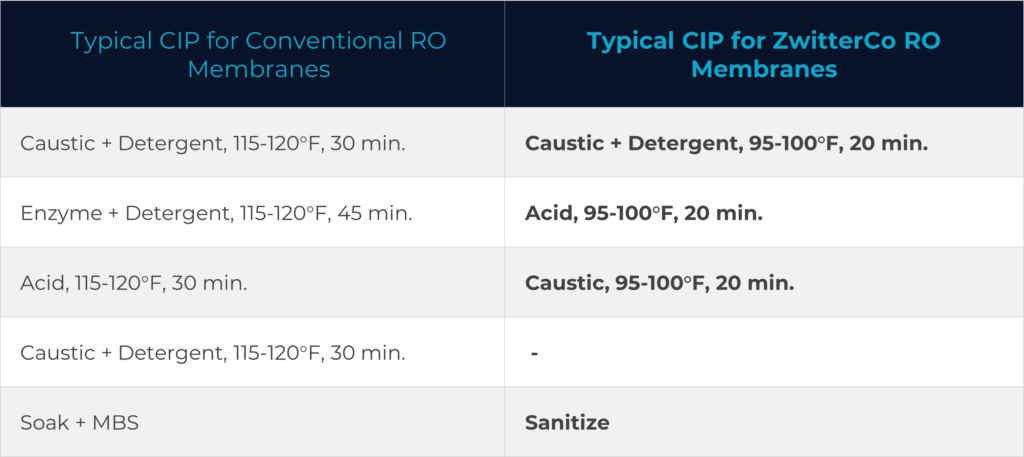Membrane technology has become indispensable in the dairy industry, enabling processes from milk concentration to whey fractionation. Despite their many advantages, membrane systems come with a variety of operational costs: high specialty chemical consumption, excessive water use, substantial energy demands, and prolonged cleaning-in-place (CIP) cycles. Understanding and addressing these costs is crucial for dairy processors aiming to optimize efficiency and profitability.
The Real Costs Behind Membrane Operations
Compared to cleaning tanks and other processing equipment, cleaning dairy membranes is an intensive process involving large volumes of specialty chemicals and water. Every chemical step of a plant’s daily cleaning program takes between 30-60 minutes, including a water flush after each step. And with a typical four-step cleaning plus sanitization, conventional dairy membranes require significant cleaning downtime to restore performance. On top of this, every step uses chemicals and make-up water, produces wastewater that needs treatment, and takes energy to heat, pump, and recirculate the cleaning solution. What kinds of cost savings and operational efficiencies could your plant realize if you removed one or more of these steps?
How Advanced Membrane Technology Cuts Costs
Innovative solutions from ZwitterCo are poised to transform membrane filtration in the dairy industry. ZwitterCo developed a breakthrough membrane technology immune to irreversible fouling from fats, oils, grease, and proteins, based on the extreme hydrophilicity of zwitterions. This anti-fouling performance has been validated across a variety of challenging water and wastewater applications, expanding the range of conditions where membrane treatment is viable and helping to reduce operating costs.
Dairy processors can utilize ZwitterCo’s anti-fouling membrane elements to achieve faster, simpler, and lower cost cleaning. For reverse osmosis (RO) systems, ZwitterCo membranes have demonstrated the ability to eliminate the need for enzyme-based cleaning steps, a standard yet costly step in traditional setups. For ultrafiltration (UF), processors can simplify their clean-in-place (CIP) procedures, with a goal of achieving a one-step clean followed by sanitization.
What Would You Do with More Time?
While savings from chemicals and utilities are certainly attractive, with fewer cleaning steps, the simpler cleaning program for ZwitterCo membranes saves time. The potential value from increasing production with this extra time is far greater. Depending on your plant, you may be able to run your system more hours, or at the least, allow your personnel to focus on preventative maintenance and other critical tasks.
Real-World Example
In 2024, ZwitterCo process RO elements were installed at two whey processing facilities to treat diverse wastewater streams, including process permeate, CIP solutions, and flushes from various products.
Both customers immediately reduced chemical costs by eliminating the enzyme cleaning step, their most expensive and time-consuming CIP phase, shortening overall cleaning time by over an hour. Cleaning temperatures were lowered, further cutting heating time and energy expenses. The table below shows a typical cleaning program for ZwitterCo RO membranes.

These membranes were seamless drop-in replacements, requiring only cleaning program adjustments, resulting in reduced downtime and lower wastewater volumes requiring further treatment.
Ultimately, time is one of the most valuable resources in your operation. ZwitterCo membranes deliver superior performance with a shorter, lower-cost cleaning program compared to conventional membranes.
The benefits of the shorter cleaning required for ZwitterCo membranes include:
- Lower cleaning costs
- Additional time for processing or other plant operations
- Sustainability gains from fewer chemicals, less water, and less energy
Connect with our team today to learn how your facility can benefit from lower costs, higher efficiency, and enhanced product quality.

